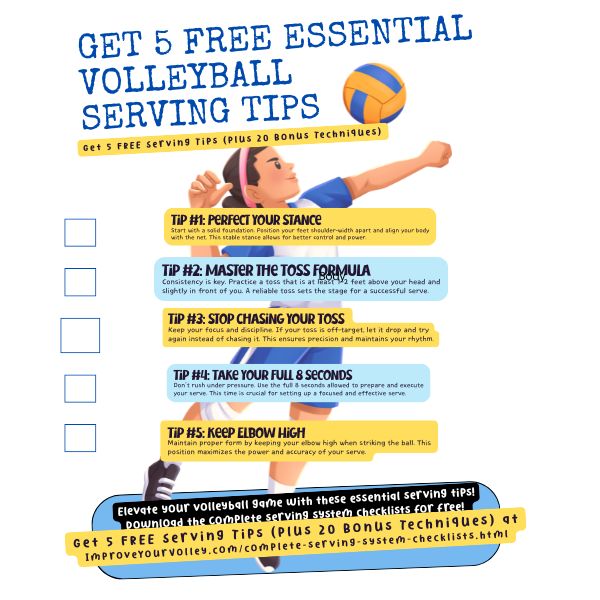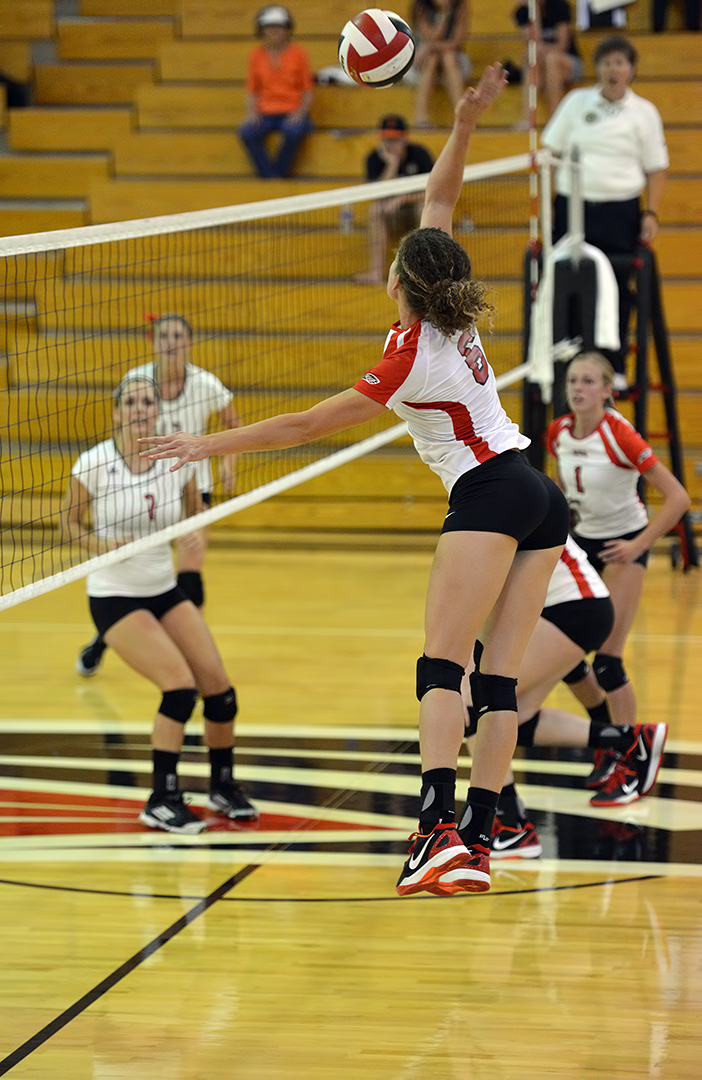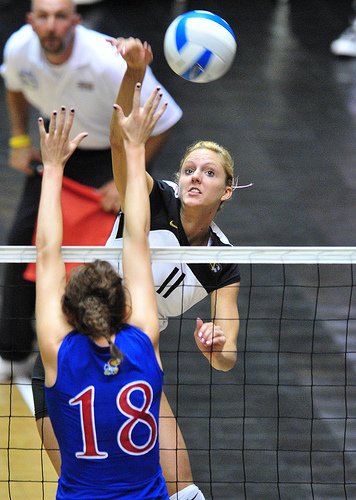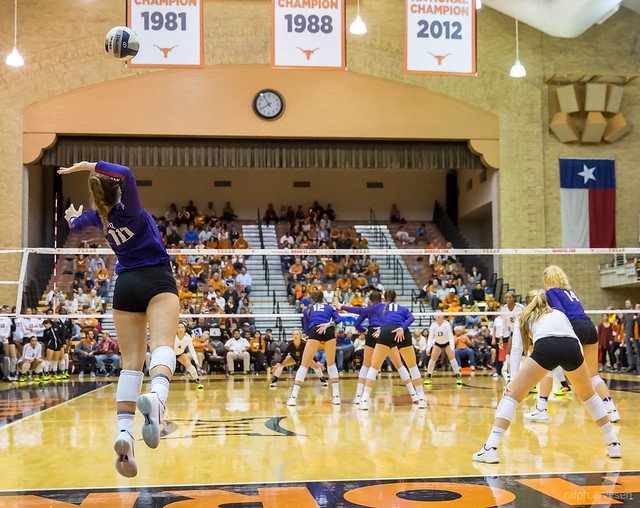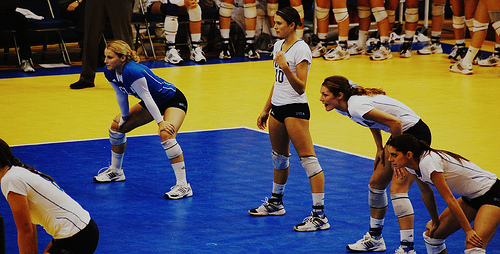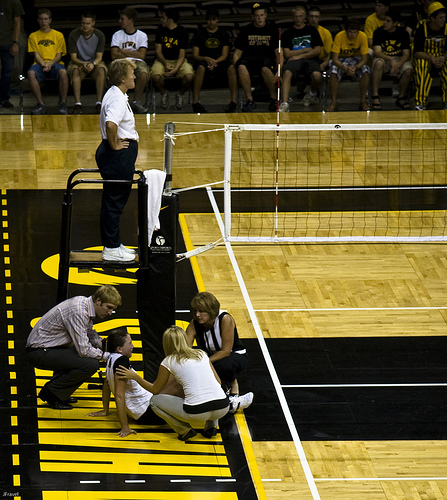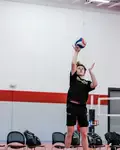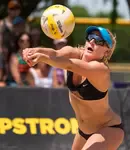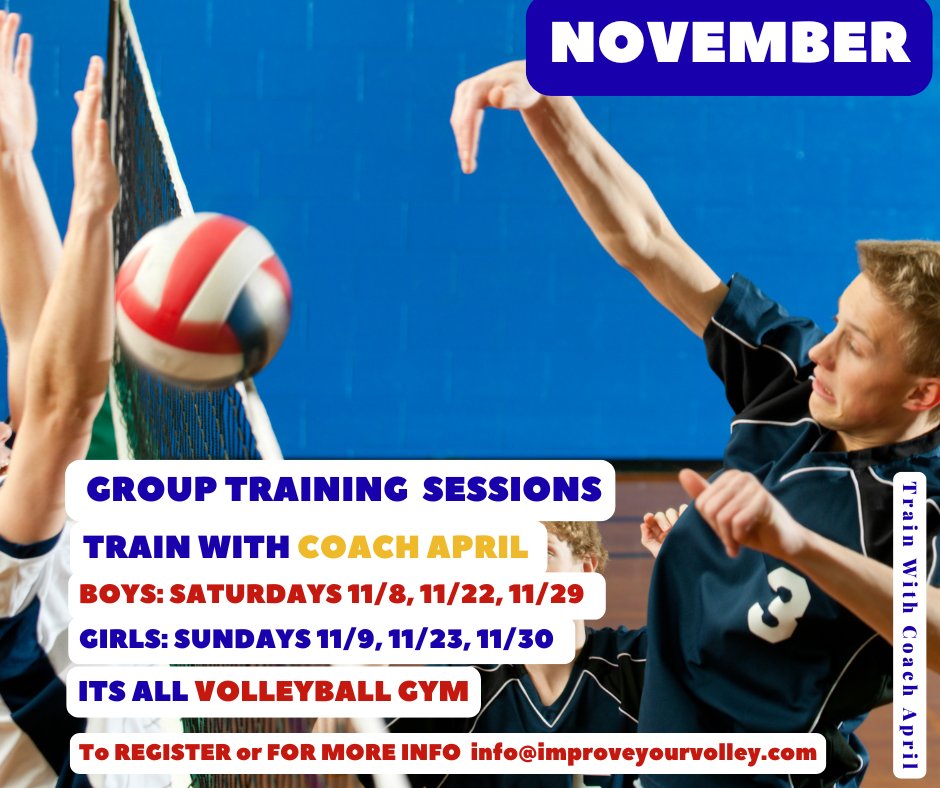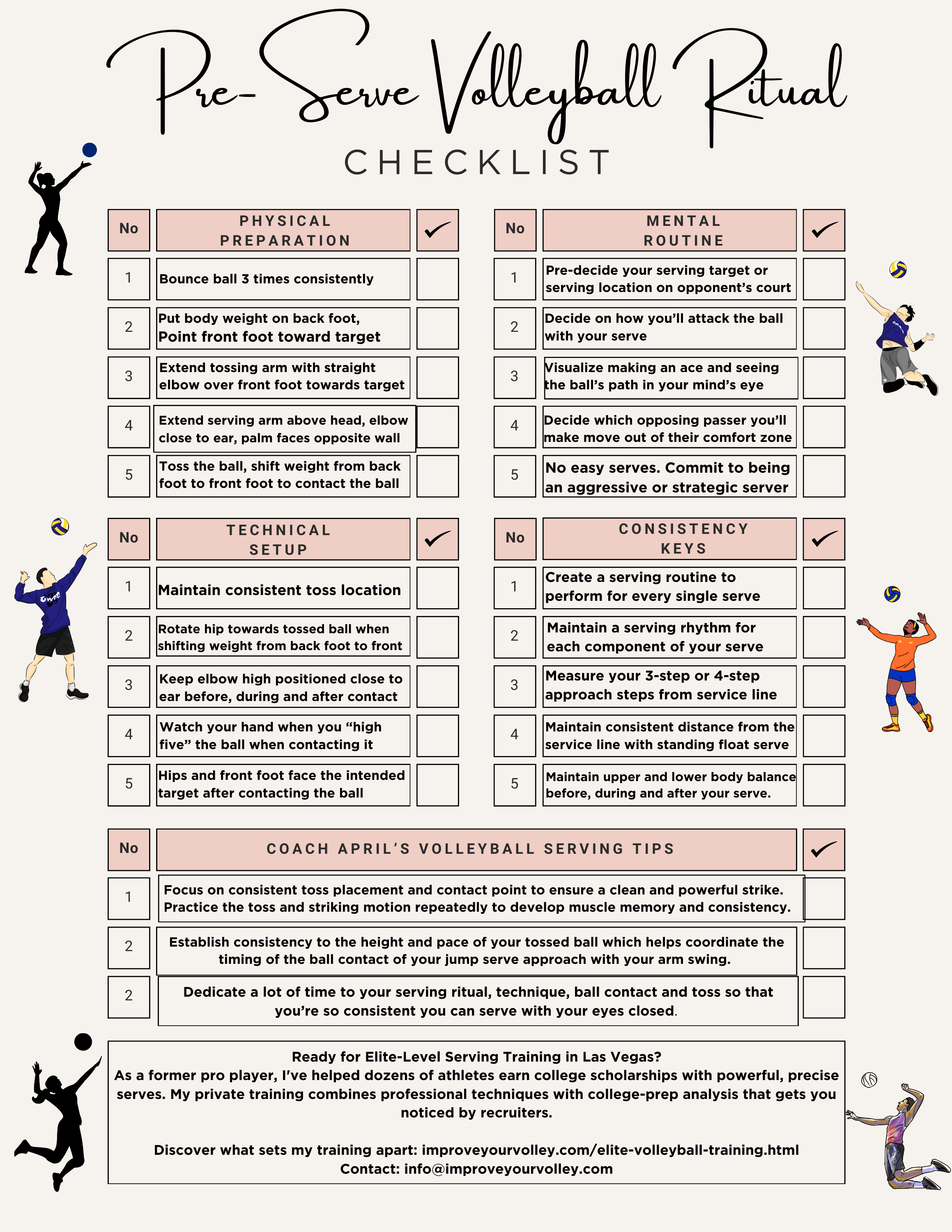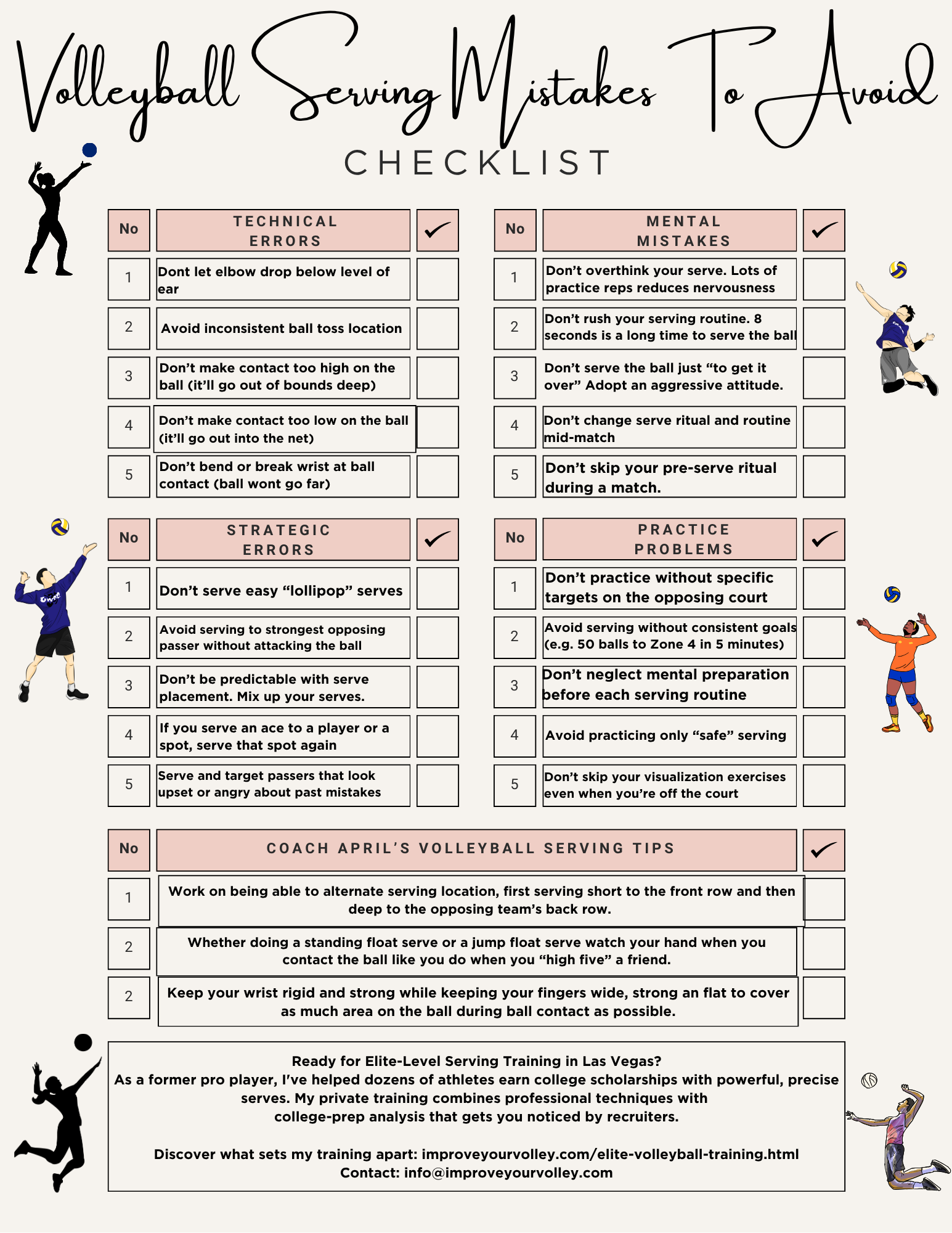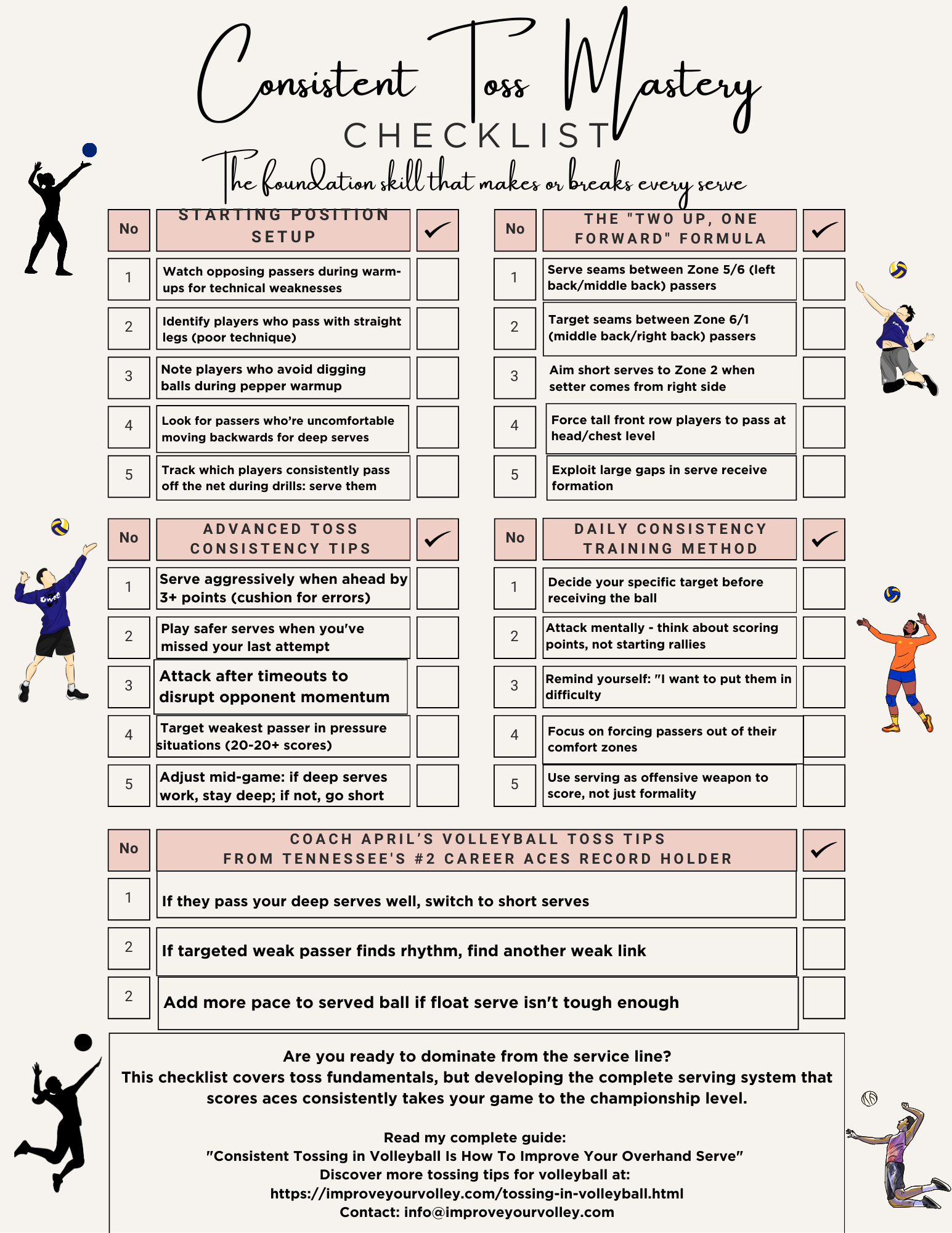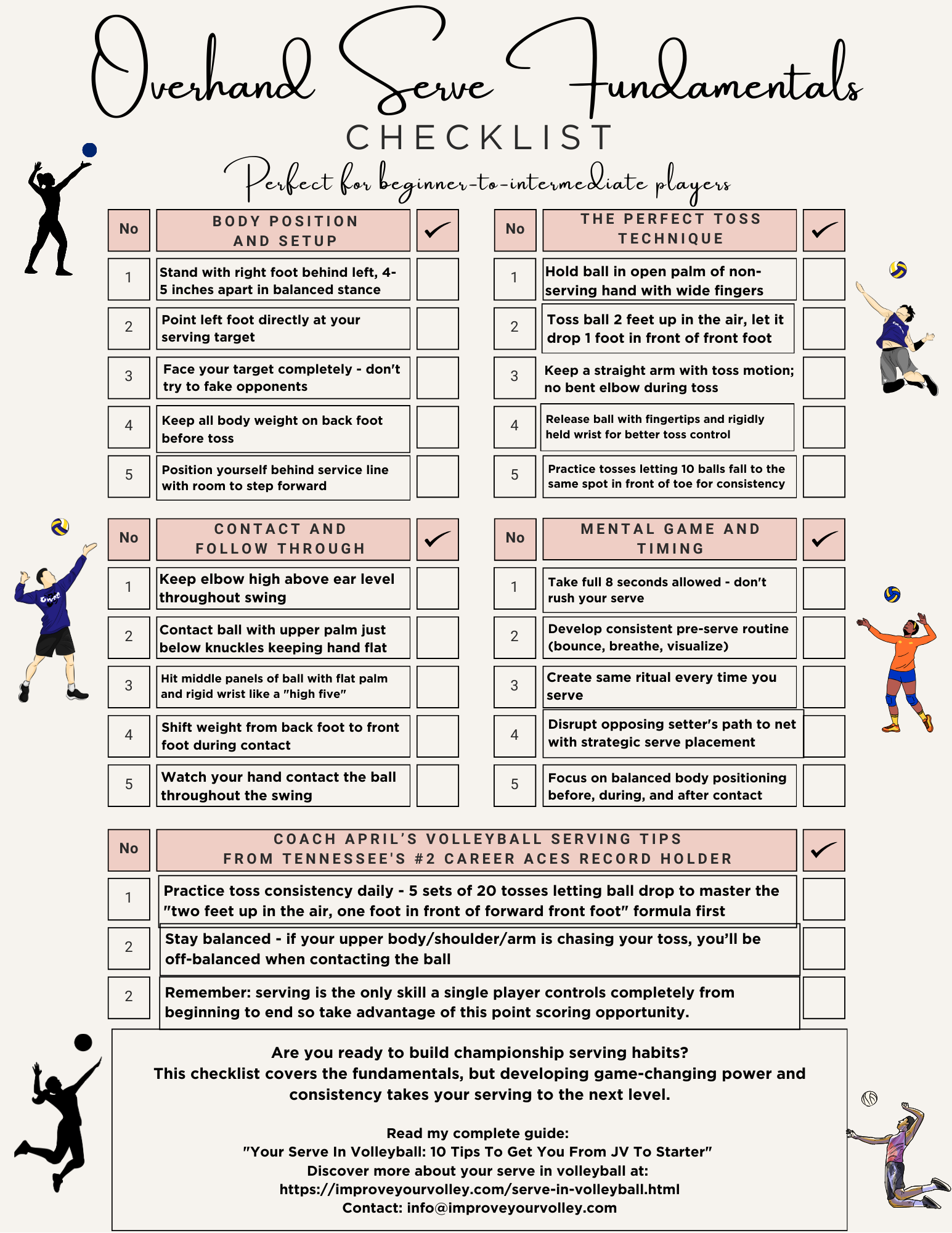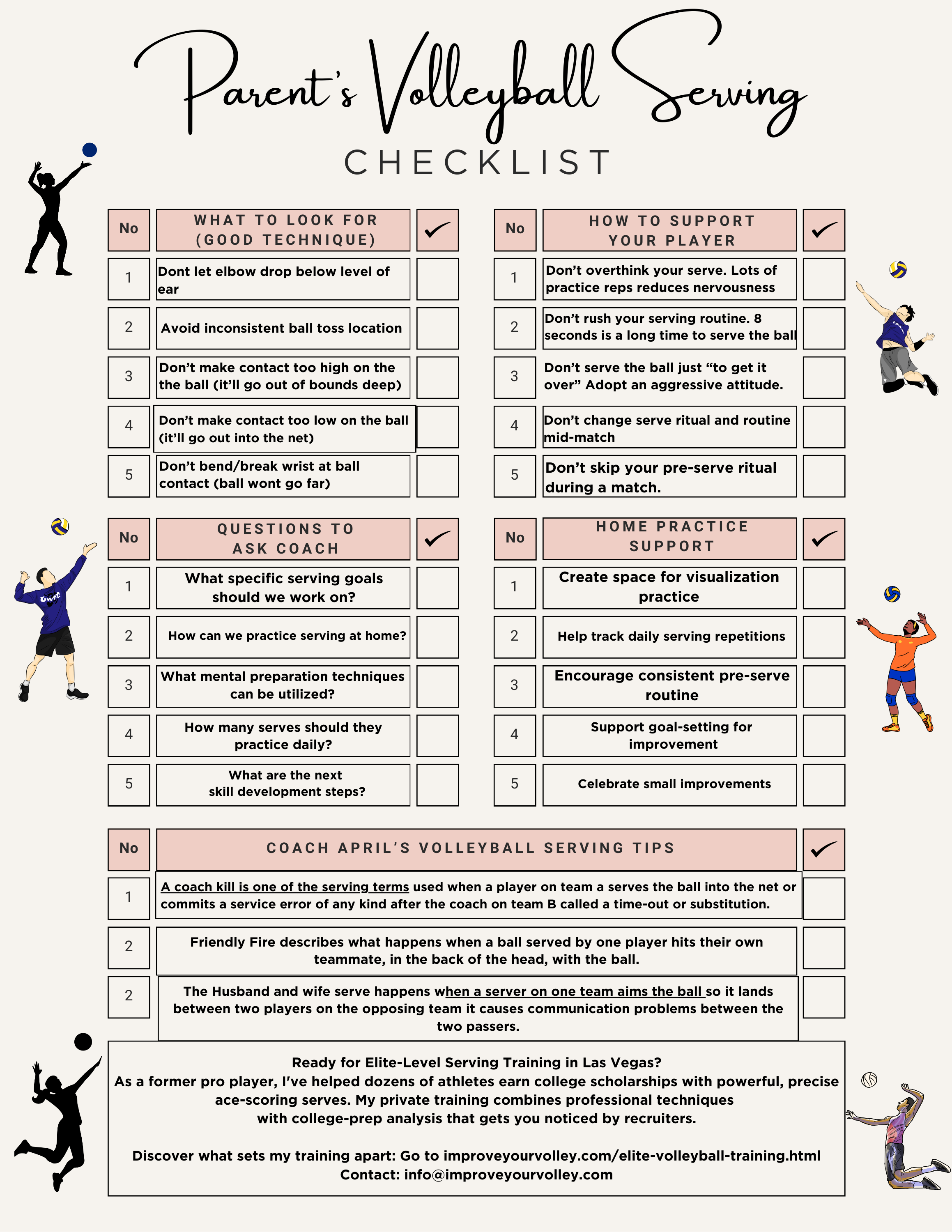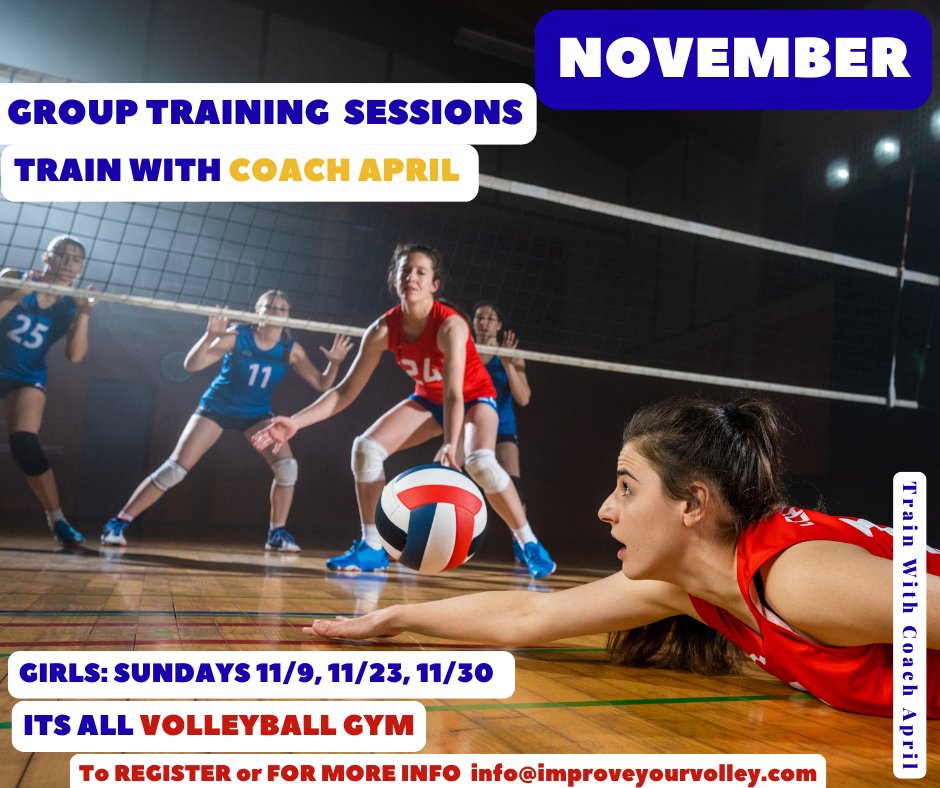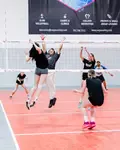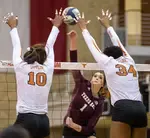- Improve Your Volleyball with Coach April
- Basic Rules of Volleyball
Basic Rules of Volleyball For Youth Players, Coaches, Parents and Fans
These basic rules of volleyball review the regulations for volleyball scoring and for playing actions allowed and not allowed in the game.
These basic rules of volleyball review the regulations for volleyball scoring and for playing actions allowed and not allowed in the game.
If you are a youth player, coach, parent, or a fan, it's important to understand the basic rules of volleyball before becoming a serious player.
These rules serve as the foundation of the game and ensure fair play and safety.
Whether you're a
- youth player looking to improve your skills,
- a coach guiding your team,
- a parent supporting your child, or
- a fan cheering for your favorite team, having a solid grasp of the rules is super important.
Why Is It So Important To Understand the Basic Rules of Volleyball?
Having a thorough understanding of the rules of volleyball is crucial for all participants in the game.
For players, knowledge of the rules ensures proper execution of techniques and strategies, helps maintain discipline on the court, and promotes fair play.
Coaches rely on their understanding of the rules to guide their teams and make informed decisions during matches.
Parents who familiarize themselves with the rules can better support and encourage their children while watching them play.
As for fans, understanding the rules enriches their experience and enhances their appreciation for the sport.
Volleyball Scoring:
How To Score A Point
Before you become a serious player you should know the basic rules of volleyball.
- Each team is allowed three contacts of the ball.
- The third contact of the ball MUST go over the net and into the court of the opposing team to either
a) score a point - if it hits the floor inside the opposing team's half court. Point for your team. Your team gets to serve again.
c) end the rally - because the ball hit the floor outside of the opposing team's half court. Point for the opposing team. Opposing team gets to serve.
Basic Rules of Volleyball
Volleyball Scoring:
How To Score A Point
a) completing an action, whether its with a
1. soft hit - Making a gentle contact with the ball that results in it hitting the floor on the opposing team's half court before they can get it up and back into your team's court.
2. hard hit - Executing a powerful hit that forces the ball to land on the opposing team's half court, preventing them from making a successful contact.
3. a block - Successfully blocking the opposing team's attack, causing the ball to hit the floor on their side.
that results in the ball hitting the floor on the opposing team's half court before the opposing team can contact it to get it up and back into your team's court.
Additionally, a point can be awarded if the opposing team commits a "fault," which refers to mistakes or errors such as
b) the opposing team committing a "fault" which is a mistake or an error like
A fault is a playing action that the rules of volleyball do not allow.
c) the opposing team getting a penalty, like a sanction from the referee
These actions are not allowed according to the rules of volleyball.
Furthermore, a penalty imposed by the referee can also result in the opposing team losing a point.
Basic Rules of Volleyball
What's a rally?
In volleyball, a rally is the back and forth exchange between the two teams where they send the ball over the net into each other's court.
A rally always begins with a serve by the team on defense to the receiving team who gets three chances to contact the ball with the third contact having to go over the net.
Then the opposing team gets three contacts on the ball to get the ball, BACK over the net...this back and forth will continue until the ball hits the floor or goes out on someone's side.
This back and forth exchange between the two teams sending the ball back and forth over the net into each other's court is called a rally.
When the ball hits the floor, the rally is a completed rally and the team who won the rally is awarded a point.
Starting and Ending a Volleyball Rally
A volleyball rally begins with the serve, which is executed by the team on defense.
The server stands behind the end line and sends the ball over the net to the receiving team.
The primary goal of the serving team is to initiate the rally in a strategic way, aiming to make it challenging for the receiving team to control the ball.
Once the serve is received by the opposing team, the rally officially begins.
These contacts usually involve a pass, set, and spike, but can vary depending on the team's strategy.
During the rally, the two teams engage in an exciting back-and-forth exchange.
The defensive team, on the other hand, aims to block or dig the ball, preventing it from hitting the floor on their side.
The rally continues until one of the following events occurs:
1. Point scored
A team scores a point if they successfully land the ball within the boundaries of the opposing team's court or if the opposing team commits a fault, as stated by the rules.
This results in the team that scored the point being awarded the next opportunity to serve.
If the ball lands outside the boundaries of the court, the rally ends, and the opposing team is awarded a point and the subsequent serve.
3. Fault or violation
If a team commits a fault or violation, such as touching the net, double hitting, or stepping over the centerline, the rally ends, and the opposing team is awarded a point and the subsequent serve.
4. Ball hits the floor:
If the ball touches the ground within the court boundaries due to a failed attempt at returning it by either team, the rally ends.
Understanding the dynamics of starting and ending a rally is crucial for players, coaches, parents, and fans, especially with the growing popularity of professional volleyball in the United States.
It allows them to
- appreciate the strategic elements of the game,
- follow the flow of play, and
- better engage with the sport
By observing the exciting rallies and the dynamics that come with them, everyone involved can enjoy the fast-paced action and intense competition of volleyball.
Basic Rules of Volleyball
Scoring Examples
 Basic Rules of Volleyball-(Craig Fildes) if the serving team wins the rally they are awarded a point
Basic Rules of Volleyball-(Craig Fildes) if the serving team wins the rally they are awarded a pointLet's take a look at different scenarios in volleyball scoring:
What happens...
If the serving team wins the rally
- they are awarded a point
- receive the ball to serve again
- they do not rotate
- the same player who served the ball, gets to serve again
The receiving team
- gets no points but
- gets another chance to win the rally, but must receive the serve
- must continue the rally without committing any faults
When they (the receiving team) do win the rally, their players will rotate one position, so the last person who served, during the last rally they won, will NOT serve again.
For each new rally, the team rotates so they have a new server.
If the serving team loses the rally...
- they lose the opportunity to continue serving
- give the ball to the other team
- get no points
- are now in serve receive
- must win a rally in order to earn the chance to serve again and score a point
Remember, these are just some of the basic rules of volleyball.
It's crucial to familiarize yourself with the complete rulebook and continue learning as you progress in the sport.
The Role of the Referee in Enforcing Rules
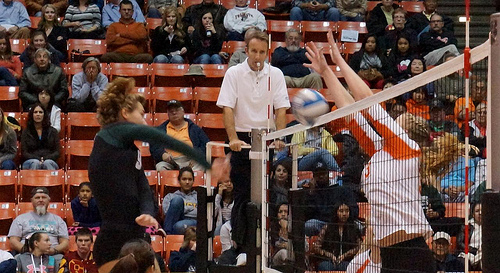 Referees play a crucial role in overseeing matches, making judgments, and enforcing the rules to maintain a level playing field for both teams.
(photo by inky hack volleyball referee makes the calls)
Referees play a crucial role in overseeing matches, making judgments, and enforcing the rules to maintain a level playing field for both teams.
(photo by inky hack volleyball referee makes the calls)The role of the referee in volleyball is vital to ensure fair play and adherence to the rules of the game.
Here's an insight into the important responsibilities carried out by referees:
1. Rule Interpretation and Application
Referees are well-versed in the rules and regulations of volleyball.
They interpret and apply these rules accurately to ensure consistent and fair play by both teams.
They have a deep understanding of the game and its nuances, which allows them to make informed decisions during the match.
2. Match Management
Referees are responsible for managing the overall flow of the match.
They ensure that the game progresses smoothly, maintain control over the players' conduct, and settle any disputes that may arise.
Referees have the authority to issue warnings, penalties, or even expulsion from the match if necessary.
3. Fault Detection
Referees closely monitor the actions of the players to detect any rule violations or faults.
This includes violations such as touching the net, improper hand contact, foot faults during serving, double contacts, and other infractions.
Their keen attention to detail helps maintain the integrity of the game and upholds the spirit of fair competition.
4. Decision Making:
Referees make quick and accurate decisions during crucial moments of the game.
They determine whether a ball is in or out of bounds, identify faults committed by players, or judge whether a block or spike is legal.
Their impartiality and ability to make split-second decisions contribute to the smooth progression of the match.
5. Communication:
Referees play a crucial role in maintaining open lines of communication with players, coaches, and officials.
They ensure that all participants understand their decisions and the reasons behind them.
Throughout the match, referees may provide verbal cues and signals to communicate specific rulings or decisions to the teams and spectators.
6. Safety and Sportsmanship:
Referees prioritize the safety of the players, enforcing rules designed to prevent dangerous or reckless play.
They assess the conduct of players to ensure sportsmanship is upheld, discouraging any unsportsmanlike behavior or actions that may jeopardize the integrity of the game.
The role of the referee is critical in upholding the rules and ensuring fair play in volleyball. Their impartiality, knowledge, and authority contribute to the smooth running of matches, allowing players to compete within a controlled and respectful environment.
Their presence on the court is essential in maintaining the integrity of the game and providing an enjoyable experience for participants and spectators alike.
Basic Rules Volleyball:
Where Do You Go From Here?
Good times! Where do you need to go now? Here are three options:
- Learn more about the Rules.
- Follow the suggested reading on our Sitemap page Learning How To Play (Sitemap)
- Or visit the pages in the section in the drop down menu at the top of the page.
If your athlete struggles with consistent serve receive, gets subbed out, or is overlooked for playing time—this is the fix you’ve been looking for.

Struggling with passing consistency?
I help talented passers tired of getting pulled from games because of inconsistent serve receive skills BUILD passing confidence without expensive private lessons using the same 3-step system that's helped dozens of my athletes get recruited.
Download my eBook for $17.99 and start building the passing confidence that keeps you on the court—and gets you seen by college coaches.
From Lady Vol to Legend: Coach April Produces Powerful Passionate Players...is that you?
What Are You Looking For?
Click to Download Your Pre Serving Ritual Mastery Checklist pdf:
🎯Volleyball Pre Serving Ritual Guide -
Players! Learn How To Transform Your Serve from Weak to Weapon
Click to Download Your Parent's Volleyball Serving Checklist pdf
🎯Parent's Volleyball Serving Checklist Guide
Parents! Help Your Player Develop Championship Serves (Even If You've Never Played)

Hi there!
Thanks for stopping by. Hope you learned something today that will help you reach your volleyball goals.
Be sure to subscribe to my email newsletter so you can learn more each week!
Stay strong! Stay motivated!
-Coach April

SUSCRIBE to my email newsletter below!
 Click to learn more about the weekly volleyball classes and clinics or email info@imrpoveyourvolley.com for information
Click to learn more about the weekly volleyball classes and clinics or email info@imrpoveyourvolley.com for informationCongratulations to my seven Boys-18s Vegas Volley club players who played in two state championship finals yesterday, the 3A and 5A State champinship finals at Sunrise Mountain High School.
TOURNAMENT CHAMPIONS!
A-1 Vegas Volley VBC
In It To Win It Tournament
May 2 - 4, 2025 Tournament
Gold Medalists
18s Premier Division
Vegas Volleyball's Unsung Heroes: Celebrating Moms with Peace Love Volleyball Shirts
Ready to energize your volleyball mom journey?
Subscribe to my 'Producing Powerful Passionate Peaceful Players' email list above on ImproveYourVolley.com.
You'll receive energy-boosting tips, exclusive insights from me, Coach April Chapple on maintaining momentum in volleyball.
Let's power up the Vegas volleyball scene together!
Recent Articles
-
Tips For Short Volleyball Players: Top Strategies to Beat Big Blockers
Jan 11, 26 11:00 PM
You don't need to be 6 feet tall to dominate at the net. Learn my tips for short volleyball players to use to outsmart bigger blockers and score more points. -
Essential Skills for a Hitter in Volleyball: Tips For Short Attackers
Jan 11, 26 07:05 AM
A short hitter in volleyball can aim the ball for the seam of the block to score since its harder for defenders to block at the net or dig up in the back row. -
10 Hitting Tactics Short Volleyball Players Use Against Big Blockers
Jan 11, 26 06:57 AM
These are 10 hitting tactics that short volleyball players, can rely on hit against and sideout and score against teams with big blockers in the front row.
